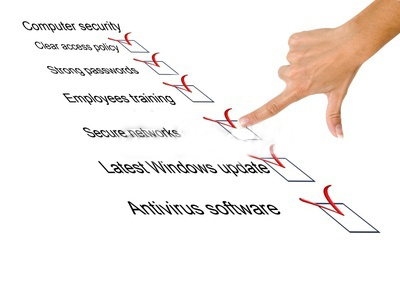
Physical Therapy Software: The Benefits of EMR in a Physical Therapy Private Practice
Electronic medical records (EMRs) are becoming a commonplace in all private practices. Nitin Chhoda shares the benefits of using EMR, how to find the right one that can save time, improve quality of patient care and help the practice owner live a life of freedom and independence.
 Much has been written about the benefits of physical therapy software automation, but the advantages extend far beyond savings and increased efficiency for private practice owners.
Much has been written about the benefits of physical therapy software automation, but the advantages extend far beyond savings and increased efficiency for private practice owners.
Electronic medical records (EMRs) provide the technology for patients and therapists to connect and manage care no matter where they travel.
Veteran’s hospitals have been using a form of EMR for years to coordinate patient care more effectively and physical therapy practices can now share in the bounty.
The Advantages of EMR
EMRs offer electronic billing options that can make the difference between a practice thriving or simply surviving. Therapists will see a quicker return on reimbursements for greater cash flow with electronic billing, allowing them to manage their clinics with greater physical therapy software accuracy and profitability.
Practice owners can easily ascertain where the bulk of their revenues are originating, allowing them to contract with the best payers.
While the majority of physical therapists won’t see a natural disaster on the scale of raging wildfires, deadly twisters or Hurricane Katrina, all those events amply demonstrate the need for physical therapy software automation. There’s no need to rely on a patient’s traumatized memory to recall injuries, medications and past procedures.
EMRs can be used to access essential health information from anywhere an Internet connection is available. They effectively speak for patients when they’re unable to communicate for themselves.
EMRs provide continuity of physical therapy software service in the event that a therapist retires, moves or dies. Paper records can become lost, misplaced or destroyed, but electronic data provides a permanent record that can be accessed anytime.
More Benefits of EMR Defined
An EMR patient portal gives clients access to their personal health records and test results, allowing physical therapy software clients to take a more active role in their health care.
Therapists that employ an EMR will quickly discover the savings available with physical therapy software automation. They save on paper and folders, space requirements for housing reams of documents, and the time necessary for staff to file them. EMRs can be established to operate from laptops or tablets for maximum efficiency.
Cloud-based EMRs enable multiple healthcare providers to view a patient’s record at the same time for coordination of care. An EMR for physical therapy software can be used for educational purposes to explain procedures and impress upon clients the importance of their treatment and the intricacies of their condition.
Prescriptions and refills can be submitted online, appointments scheduled and forms completed.
Automation Can Save You Time
Physical therapy software automates many of the tasks that can take hours to complete by hand. Therapists can include notes within the EMR, eliminating the need to decipher handwritten notations made on the fly, reducing the possibility of errors, reimbursement denials and paybacks.
 EMRs integrate easily with existing office systems for communications and marketing, including Clinical Contact and Therapy Newsletter.
EMRs integrate easily with existing office systems for communications and marketing, including Clinical Contact and Therapy Newsletter.
Physical therapy automation software streamlines office processes and procedures, allowing practice owners to offer an elevated level of care and access to patients.
The adoption of an integrated tablet-based EMR will make physical therapy practices more efficient and profitable. They open up numerous possibilities for the future, from online diagnostic software to specialized apps.
Physical therapy software automation will facilitate research and collaboration among professionals. EMRs are setting the standard for a new age of patient care and the way medicine is practiced.



















